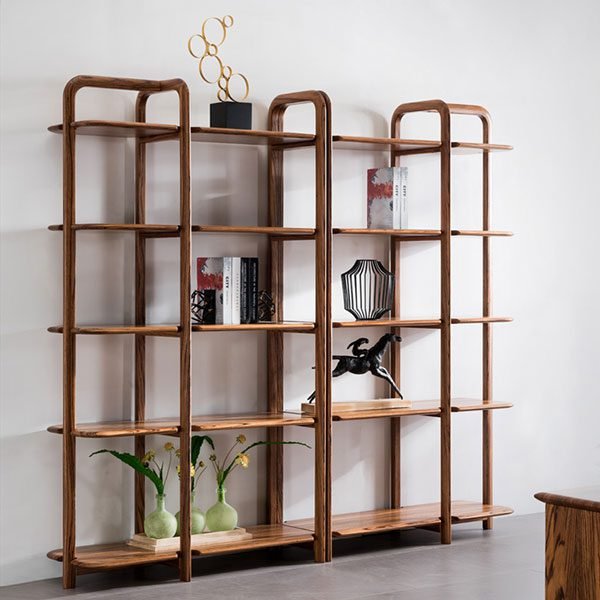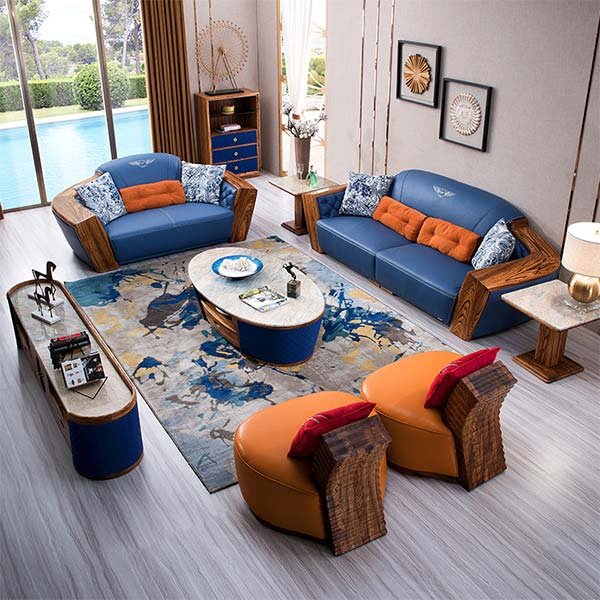Minimalist Coffee Table Designs for Modern Interiors
Minimalist Coffee Table Designs for Modern Interiors
In today’s fast-paced world, minimalism has become a popular design trend for many homeowners. This style focuses on simplicity, clean lines, and functionality. When it comes to choosing furniture for a modern interior, a minimalist coffee table is an excellent choice. These coffee tables not only serve as functional pieces but also act as centerpieces that enhance the overall aesthetic of the space.
One of the key features of minimalist coffee tables is their sleek and simple design. These tables often have clean lines and a minimalist color palette, which allows them to seamlessly blend into any modern interior. The use of materials such as glass, metal, and wood adds to their contemporary appeal. These materials not only provide durability but also create a sense of sophistication and elegance.
Another characteristic of minimalist coffee tables is their focus on functionality. These tables are designed to be practical and efficient, without compromising on style. Many minimalist coffee tables come with built-in storage options, such as drawers or shelves, allowing you to keep your living space clutter-free. This feature is especially beneficial for those living in smaller apartments or homes, where space is limited.
When it comes to shapes and sizes, minimalist coffee tables offer a wide range of options. Rectangular or square-shaped coffee tables are the most common choices, as they provide a clean and symmetrical look. However, round or oval-shaped coffee tables can also be a great addition to a modern interior, as they add a touch of softness and create a more inviting atmosphere.
In terms of color, minimalist coffee tables often come in neutral tones such as white, black, or gray. These colors not only complement the overall minimalist aesthetic but also create a sense of calm and tranquility. However, if you want to add a pop of color to your space, you can opt for coffee tables with vibrant accents or choose a bold-colored table as a statement piece.
One of the advantages of minimalist coffee tables is their versatility. These tables can easily adapt to different interior styles, whether it’s a Scandinavian-inspired living room or an industrial loft. Their timeless design ensures that they will remain relevant and stylish for years to come.
When choosing a minimalist coffee table for your modern interior, it’s essential to consider the overall size and layout of your space. A coffee table that is too large or too small can disrupt the balance and flow of the room. It’s also important to think about the functionality and storage options that you require. Consider your lifestyle and how you plan to use the coffee table to ensure that it meets your needs.
In conclusion, minimalist coffee tables are an excellent choice for modern interiors. Their sleek design, functionality, and versatility make them the perfect centerpiece for contemporary spaces. Whether you prefer a simple rectangular table or a round table with storage options, there is a minimalist coffee table out there that will suit your style and needs. So, why not add a touch of minimalism to your living space with a stylish and functional coffee table?
Incorporating Natural Materials in Contemporary Coffee Table Styles
Incorporating Natural Materials in Contemporary Coffee Table Styles
Coffee tables have long been a staple in living rooms, serving as both functional and decorative pieces. As interior design trends evolve, so do the styles and materials used in creating these essential centerpieces. In recent years, there has been a growing preference for incorporating natural materials into contemporary coffee table designs. This trend not only adds a touch of warmth and organic beauty to modern spaces but also promotes sustainability and eco-consciousness.
One of the most popular natural materials used in contemporary coffee table styles is wood. Wood brings a sense of warmth and natural beauty to any space, making it a perfect choice for modern interiors. From sleek and minimalist designs to more rustic and reclaimed options, there is a wide range of wooden coffee tables available to suit various design preferences. Oak, walnut, and teak are among the most sought-after wood types, known for their durability and timeless appeal.
Another natural material that has gained popularity in contemporary coffee table designs is stone. Marble, in particular, has become a favorite choice for those seeking a luxurious and sophisticated look. Its smooth surface and unique veining patterns add an elegant touch to any living room. Additionally, stone coffee tables are highly durable and can withstand the test of time, making them a worthwhile investment.
For those who prefer a more eco-friendly option, bamboo has emerged as a sustainable material for contemporary coffee tables. Known for its rapid growth and renewability, bamboo is an excellent choice for environmentally conscious individuals. Its light color and natural texture create a fresh and airy atmosphere, perfect for contemporary spaces. Bamboo coffee tables often feature clean lines and minimalist designs, making them versatile and adaptable to various interior styles.
Incorporating natural materials into contemporary coffee table styles not only enhances the aesthetic appeal of a space but also promotes a connection with nature. The use of these materials brings a sense of tranquility and harmony to modern interiors, creating a welcoming and inviting atmosphere. Moreover, natural materials have a timeless quality that transcends passing trends, ensuring that your coffee table will remain a stylish centerpiece for years to come.
When choosing a coffee table, it is essential to consider the overall design and color scheme of your living room. Natural materials can be combined with other elements, such as metal or glass, to create a harmonious balance. For instance, a wooden coffee table with metal accents can add an industrial touch to a contemporary space, while a stone coffee table with a glass top can create a sense of lightness and transparency.
In conclusion, incorporating natural materials in contemporary coffee table styles is a growing trend that offers both aesthetic and environmental benefits. Wood, stone, and bamboo are among the most popular choices, each bringing its unique qualities to modern interiors. Whether you prefer the warmth of wood, the elegance of marble, or the sustainability of bamboo, there is a natural material coffee table that will perfectly complement your contemporary space. By choosing these eco-friendly options, you not only enhance the beauty of your living room but also contribute to a more sustainable future.
Exploring Geometric Shapes and Patterns in Modern Coffee Table Trends
Exploring Geometric Shapes and Patterns in Modern Coffee Table Trends
In the world of interior design, coffee tables have become more than just functional pieces of furniture. They have evolved into centerpieces that can make a bold statement in contemporary spaces. One of the key trends in modern coffee tables is the use of geometric shapes and patterns. These designs add a touch of sophistication and visual interest to any room.
Geometric shapes have long been admired for their clean lines and symmetrical forms. They bring a sense of order and balance to a space, making it feel more organized and harmonious. When applied to coffee tables, these shapes create a striking visual impact that instantly catches the eye.
One popular geometric shape seen in modern coffee tables is the hexagon. The six-sided polygon offers a unique and modern twist to traditional rectangular or circular tables. Hexagonal coffee tables can be found in a variety of materials, such as glass, wood, or metal. Their angular edges and sleek surfaces create a contemporary look that is both stylish and functional.
Another geometric pattern that has gained popularity in modern coffee table design is the chevron. This zigzag pattern adds a sense of movement and energy to a space. Chevron coffee tables often feature a combination of different materials, such as wood and metal, to create a visually dynamic piece. The pattern can be applied to the tabletop itself or incorporated into the base or legs of the table.
For those who prefer a more subtle approach to geometric shapes, there are coffee tables that feature intricate lattice or grid patterns. These designs create a sense of depth and texture, adding visual interest to the table. Lattice coffee tables are often made from materials like metal or wood, with the pattern carved or etched into the surface. The result is a table that is not only functional but also a work of art.
In addition to geometric shapes, modern coffee tables also embrace patterns inspired by nature. One such pattern is the honeycomb, which mimics the structure of a beehive. Honeycomb coffee tables often feature a hexagonal pattern that is repeated across the tabletop. This design adds a touch of organic beauty to a space, bringing a sense of nature indoors.
Transitional phrases such as “in addition to,” “another,” and “for those who prefer” help guide the reader through the different ideas presented in the article. These phrases create a smooth flow from one concept to the next, allowing the reader to easily follow along.
In conclusion, modern coffee table trends have embraced the use of geometric shapes and patterns to create centerpieces for contemporary spaces. From hexagons to chevrons, these designs add a touch of sophistication and visual interest to any room. Whether you prefer a bold statement or a subtle touch, there is a geometric coffee table out there to suit your style. So why settle for a plain and ordinary coffee table when you can have a piece of art that not only serves a purpose but also enhances the overall aesthetic of your space?
Conclusion
In conclusion, modern coffee table trends for contemporary spaces focus on sleek and minimalist designs, incorporating materials such as glass, metal, and wood. Centerpieces often feature geometric shapes, unique textures, and functional elements. The emphasis is on creating a visually appealing and functional focal point that complements the overall aesthetic of the space.



